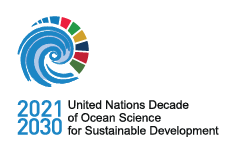Nov 2, 2022 | 9:30AM - 8:35AM | PST | Online
Detecting and Monitoring Marine Megafauna from Space: Exploring Opportunities in the Northeast Pacific

Novel technologies for detecting and monitoring large-bodied animals – or ‘megafauna’ – are becoming increasingly important for assessing presence, abundance, density, distribution, and health status, and for mitigating threats to at-risk species. Recent work globally has shown that marine megafauna such as baleen whales can be successfully detected using very high resolution (VHR) satellite imagery, allowing for scientific studies, monitoring, and forecasting in remote and inaccessible areas. In the Northeast Pacific, numerous megafauna species – such as the Blue Whale, the Fin Whale, the Grey Whale, the Humpback Whale, and the Basking Shark – are listed under Canada’s Species at Risk Act (SARA) as either Endangered, Threatened, or of Special Concern. New technologies are needed to supplement traditional survey methods, to support a greater understanding of these species and their habitats in Pacific waters and to work towards the survival and recovery of these iconic species.
To co-explore the potential development and applications of this innovative emerging technology in the Northeast Pacific, with a particular focus on the Pacific coast of Canada, the Canadian Department of Fisheries and Oceans in collaboration with the Tula Foundation’s Ocean Decade Regional Collaborative Center for the Northeast Pacific hosted a virtual knowledge sharing webinar and workshop, setting the stage for future partnerships and collaborations to detect, monitor, and forecast marine megafauna using space-based data and advanced analysis methods.
Presenters:
Lianna Gendall (SPECTRAL Remote Sensing Laboratory, University of Victoria)
Julika Voss (BioConsult, SPACEWHALE)
Cortney Watt (Space Whales Arctic Marine Mammals, DFO)
Emily Charry Tissier (Whale Seeker)
Anne Webster (Hatfield Consultants, smartWhales stream 1)
Vienna Saccomanno (The Nature Conservancy)
Ruth Joy (Simon Fraser University)
Romney McPhie (Ocean Decade Collaborative Center for the Northeast Pacific)
Emily Rubidge (DFO Science)
Detecting and Monitoring Marine Megafauna from Space: Exploring Opportunities in the Northeast Pacific (Public Webinar)
Date: November 2, 2022, 9:30am PDT
Location: Online
Convenors: Department of Fisheries and Oceans (Government of Canada), Ocean Decade Collaborative Center for the Northeast Pacific
Report
Related news
Scientists on Canada’s coasts are exploring the use of satellites to survey whales and other ocean “megafauna” to better monitor and protect at-risk ocean species. Read or listen to the full article written by Rochelle Baker at the National Observer.
